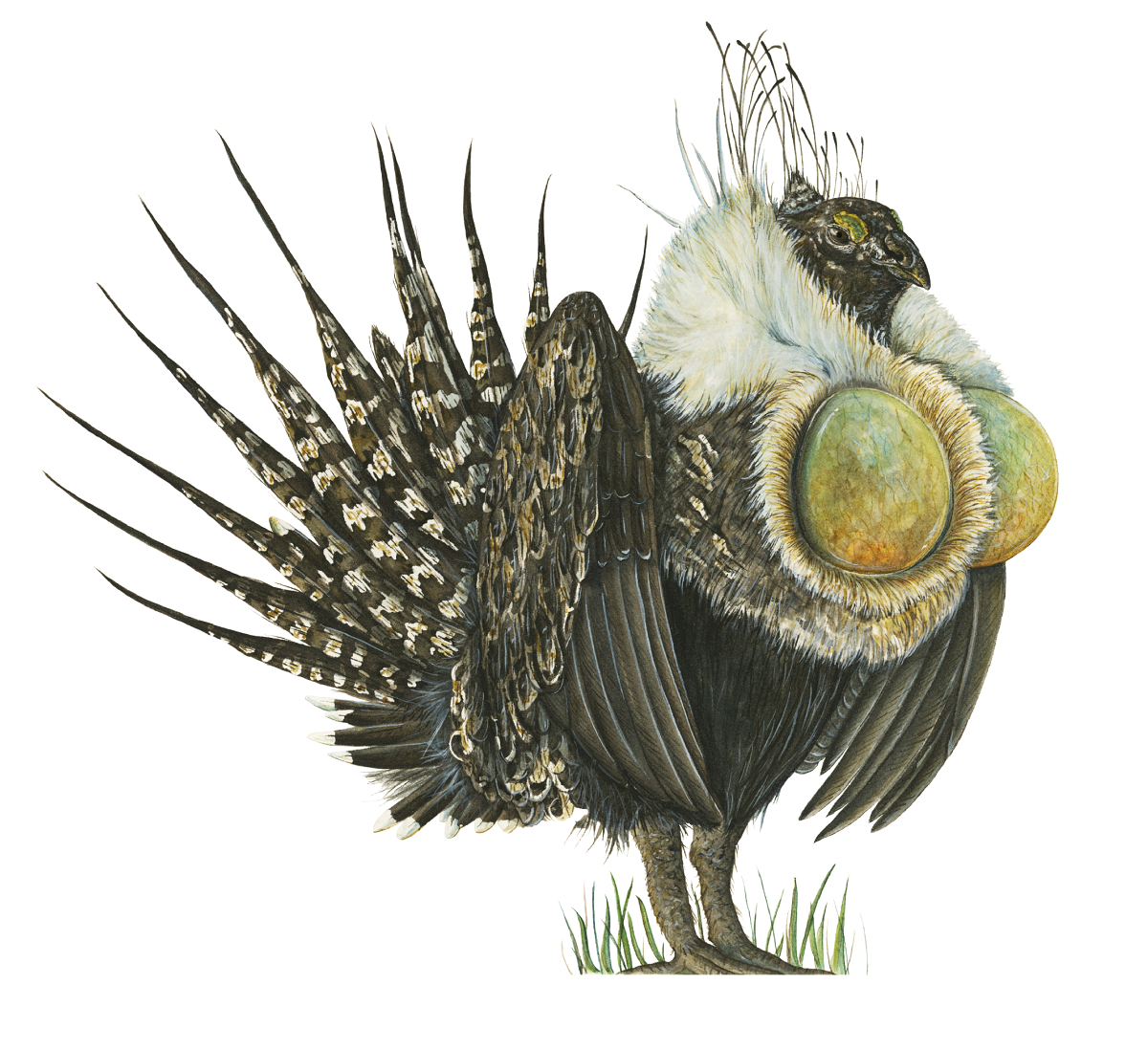
Greater Sage Grouse
Centrocercus urophasianus
(cent-ro-ser-cus yu-ro-fas-e-a-nus)

It’s easy to tell the difference between the male and female sage grouse. That’s because the male boasts some of the most unusual avian accessories around: two large, yellow, egg-shaped air sacs, which he can inflate with about a gallon of air just by breathing in. They’re quite a sight! When filled, the male can shake them to make wobbly, popping noises. Why? To attract a mate during breeding season, of course. The male sage grouse will also show off by fanning his magnificent tail feathers. In comparison, the females, with their grey-brown plumage, appear quite plain!
Greater sage grouse can reach up to 2 feet (60 cm) tall and weigh up to around 6.5 pounds (3 kg).

Where They Live
As their name suggests, the sage grouse lives in sagebrush plains. They are North American birds, native to the western United States and southeastern Canada. Between March and May, sage grouse will visit their courting grounds, known as leks, to complete their mating displays.
What They Eat
These birds mainly eat plants and will spend their days dining on fresh shoots and leaves. In warmer months, they’ll also eat small insects and flowers. Ideally, their habitat will have a water source close by, but if this isn’t possible, sage grouse will fly up to 3 miles (5 km) twice a day for a drink.
Conservation Status
Near Threatened
Due to the ever-increasing demand for crops such as wheat and potatoes, as well as products like oil and gas, the sage grouse’s habitat is quickly being lost, which has caused their population to decline. Sage grouse are very sensitive to human disruption, and their numbers provide a good indication of how healthy the ecosystem is. Unfortunately, humans now use so many of the areas where the sage grouse used to live that the birds inhabit only half of their original range.

Fun Facts
